Waiting in long lines to order food can be frustrating. Now, interactive digital menus are changing the game. This blog post will show you how these menus make eating out easier and more fun.
Keep reading to learn more!
Key Takeaways
- Interactive digital menus use technology like touchscreens and QR codes to make ordering food easy and fun. They allow customers to see images and descriptions of dishes before deciding.
- Digital menus save time for both customers and staff by speeding up the ordering process, reducing wait times, and making kitchen operations more efficient.
- These systems offer benefits such as real-time menu updates, customization options for orders, integrated loyalty programs, and gathering valuable data on customer preferences which can help restaurants grow their revenue.
- While digital menus improve dining experiences with features like language options and feedback tools, they also require an initial investment in technology and training for staff.
- Types of digital menus include QR code menus, tablet menus at tables, self-service kiosk stations, mobile apps for ordering ahead of time, online website menus updated regularly; each offers a unique way to enhance the customer experience.
Table of Contents
ToggleThe Rise of Digital Menu Ordering

Digital menu ordering is gaining popularity in restaurants. It uses technology to make ordering easy and quick for customers.
Historical context and technological advancements
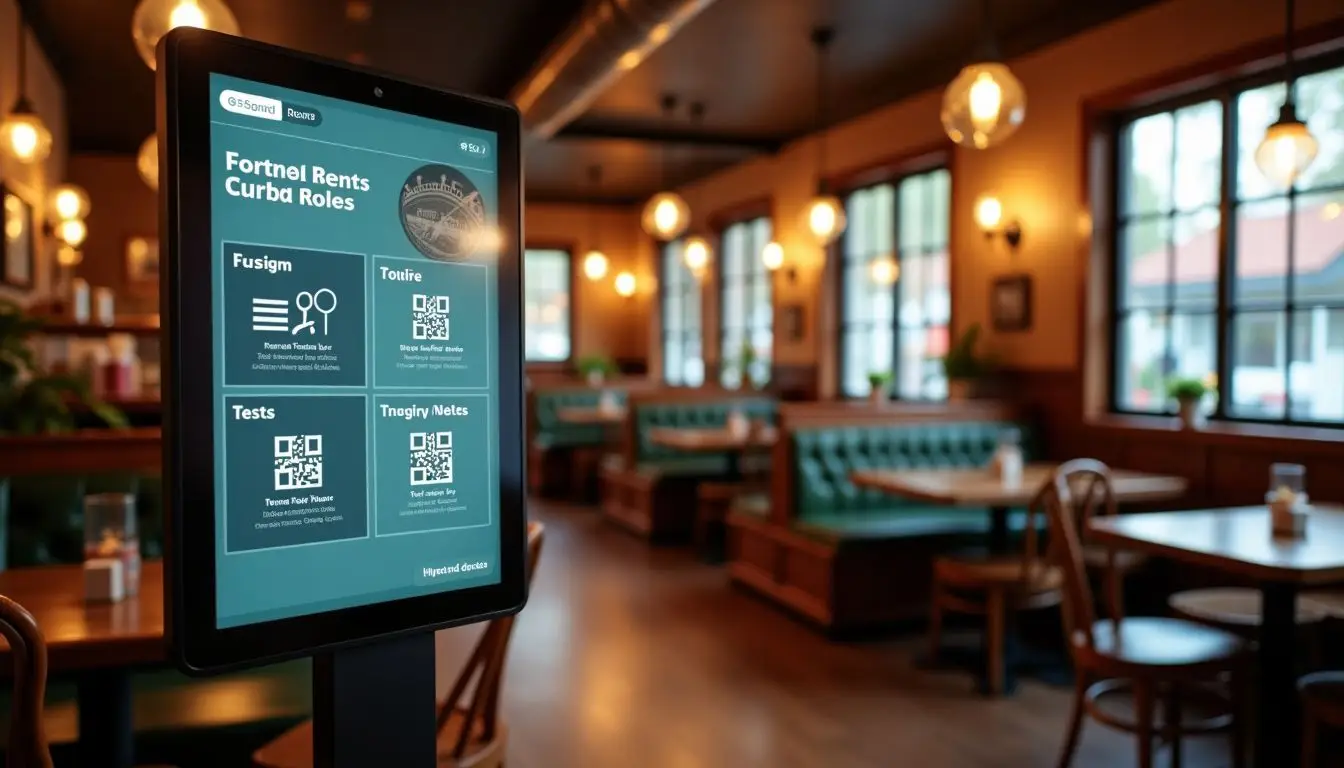
Digital menus have changed how we order food in restaurants. In the past, paper menus were common. Many people found them hard to read and limited. Now, technology has made ordering easier and more fun with digital menu boards.
Touchscreen technology helps customers see meal options clearly. QR code technology allows diners to scan codes for online menus right at their tables. These advancements create an interactive dining experience that engages customers better than ever before.
Restaurants use augmented reality menus too, which adds a wow factor to the ordering process.
How it works
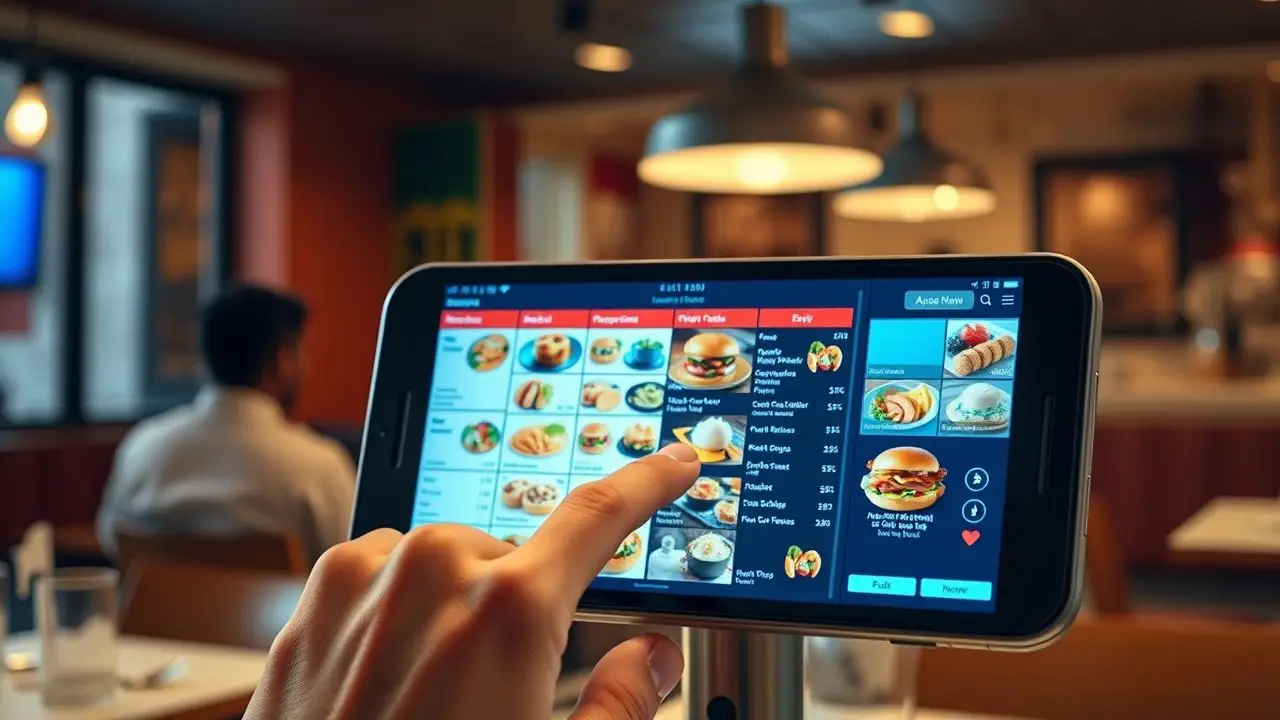
Interactive digital menus work through easy-to-use touchscreens. Customers can view the menu and make choices quickly. They tap on their desired dishes and drinks. This process is fast, which helps reduce wait times.
These systems often include pictures of the food. These visuals help customers decide what to order. Many restaurants use tablets at tables or apps on phones for this purpose. Payments can also be made directly through these systems, making service efficient and smooth.
Overall, interactive ordering improves customer engagement and enhances their dining experience.
Benefits of using digital menus
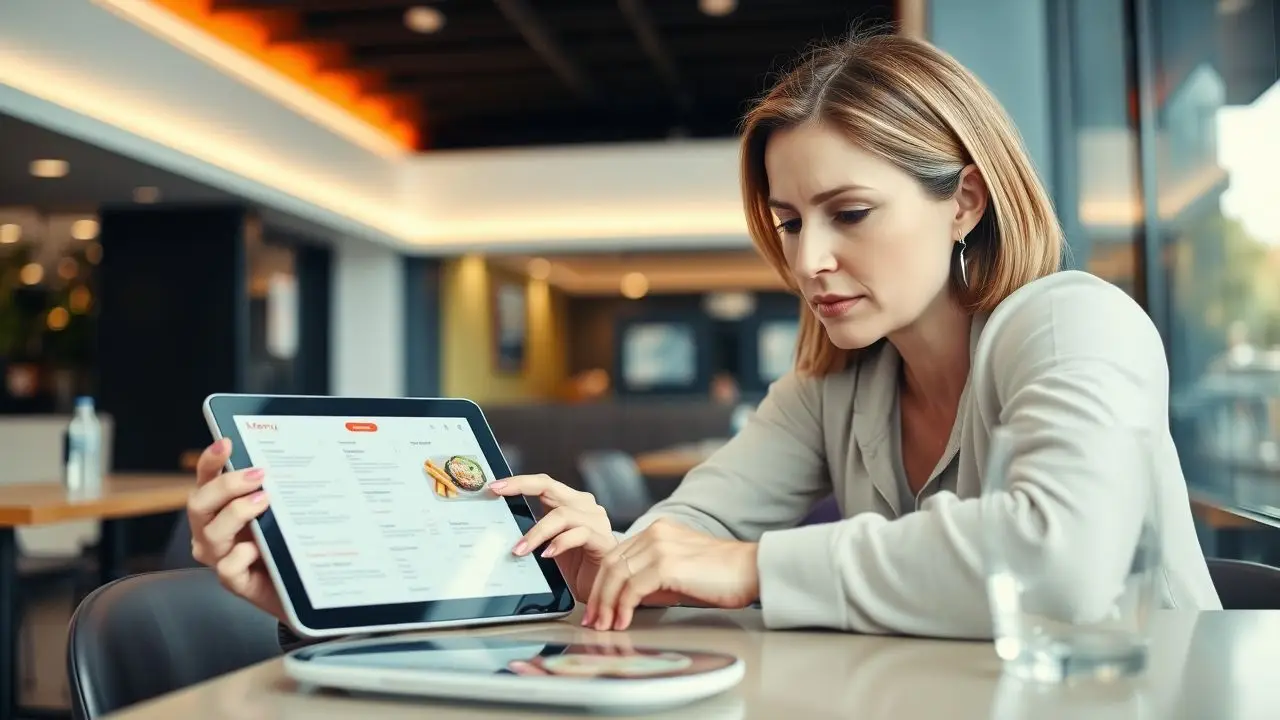
Digital menus change how people order food. They make dining easier and faster. Here are the benefits of using digital menus.
- Customers enjoy an interactive experience. They can explore menu options with images and descriptions.
- Order placement becomes quick and simple. Touchscreen technology allows for easy navigation.
- Wait time reduction happens naturally. Guests place orders from their tables, which speeds up service.
- Digital ordering provides convenience for all customers. They can customize their meals and see prices instantly.
- Restaurants gain data-driven insights for revenue growth. This information helps them understand what dishes sell best.
- Enhanced customer experience is clear with digital menus. Feedback features let diners share their thoughts right away.
- Streamlined operations save staff time and effort. Employees have fewer mistakes to fix, which improves efficiency.
- Electronic ordering systems keep kitchens organized. Orders come in directly from customers without needing a paper ticket.
- Digital innovations lead to better restaurant technology overall. More guests can be served effectively during busy hours.
- Tableside ordering is a popular feature now available at many restaurants. It keeps guests happy while waiting for their meals.
Using digital menus offers many advantages that benefit both diners and restaurant owners alike.
Implementation of Ordering Systems
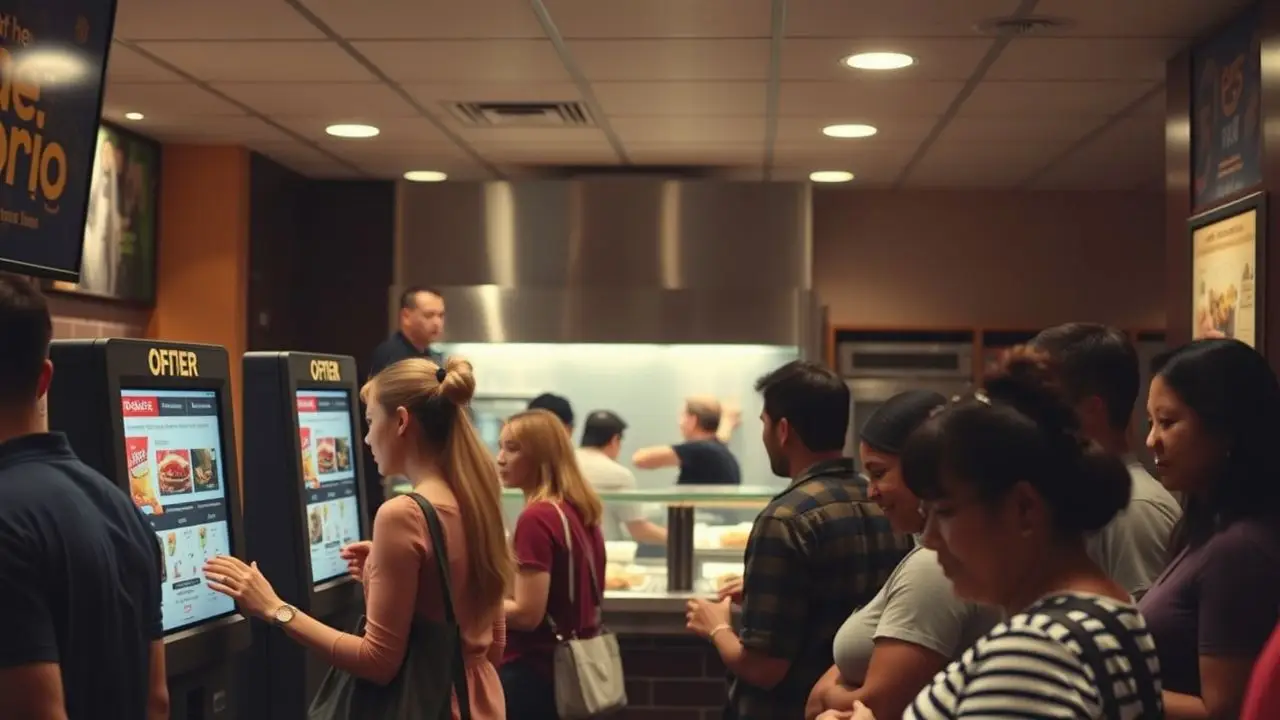
Digital ordering systems are changing how restaurants serve food. These systems make it easy for customers to place orders and help staff keep track of them efficiently.
Menu ordering in the future
Ordering in the future will use more technology. Many restaurants will offer interactive digital menus on tablets or smartphones. Customers can browse menu options quickly and easily.
They can see pictures of dishes, read descriptions, and check prices all at once.
This change helps provide efficient ordering and service. Guests can customize their meals with just a few taps. First-hand experience shows that people enjoy this new way to order because it saves time and reduces errors.
Digital menus also allow restaurants to update items faster based on customer preferences or special offers.
Other advantages
Interactive digital menus bring many benefits beyond ease of use. They change how people enjoy dining.
- Faster service boosts satisfaction. Customers can order quickly without waiting for a waiter.
- Menus can update in real-time. Restaurants can change prices or add new dishes instantly.
- Touchscreen features make it fun to browse options. Customers enjoy exploring menu items with images and descriptions.
- Language options help diverse customers feel welcome. This makes dining more enjoyable for everyone.
- Digital menus reduce printing costs. Restaurants save money by not needing paper menus.
- Customization becomes easier for customers. They can choose toppings, sizes, or extras at their fingertips.
- Loyalty programs can integrate directly into digital systems. This encourages repeat visits with special offers and rewards.
- Order history helps personalize the customer experience during future visits.
Using interactive digital menus transforms restaurant service into an efficient process that benefits both staff and diners alike.
Operational Benefits of Digital Menus
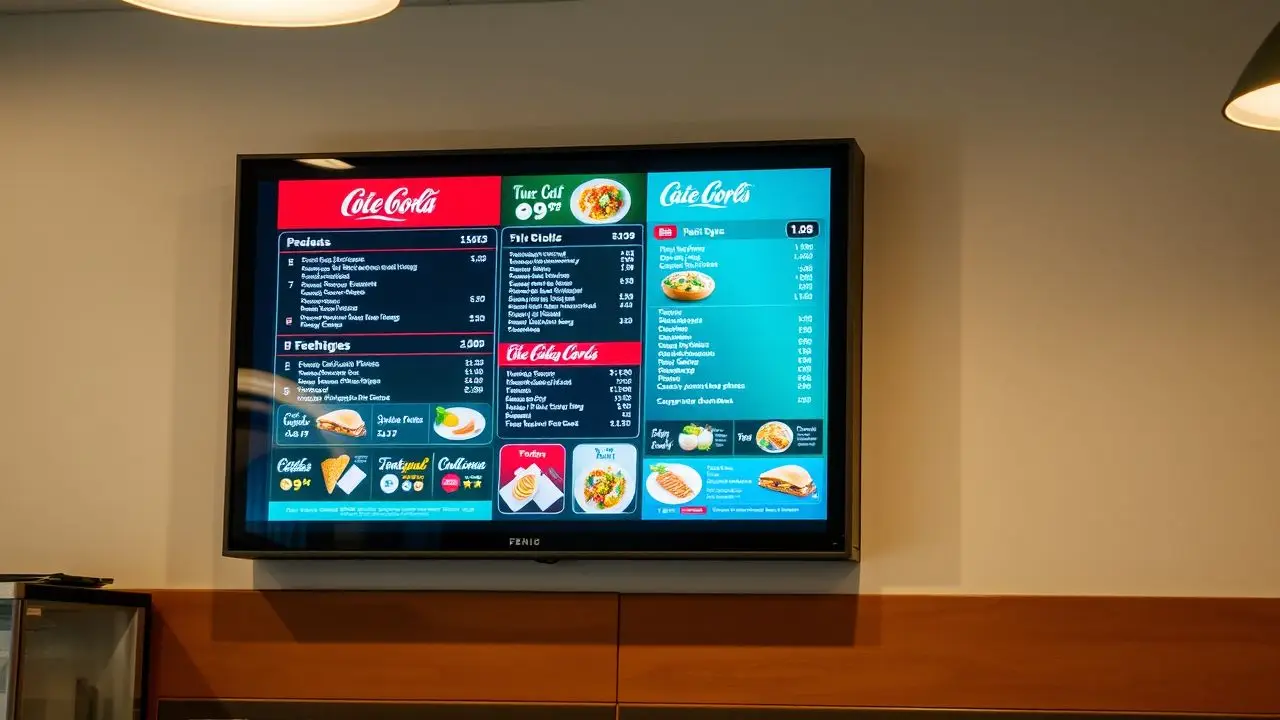
Digital menus improve the customer experience. They make ordering faster and more efficient. Customers enjoy easy access to menu options, which can increase sales for restaurants. Data from digital menus helps restaurants understand what customers want and boost their earnings.
Enhanced customer experience
Interactive digital menus improve customer experience in many ways. They allow diners to browse menu options easily. Customers can see pictures and descriptions of each dish. This helps them make better choices.
Orders are placed quickly through a simple touch on the screen.
Many restaurants report faster service times with these systems. Staff spend less time taking orders and more time serving food. Happy customers often return for more visits, boosting revenue growth for the restaurant.
First-hand experience shows that people enjoy using technology in dining settings, which makes their meal even better.
Data-driven insights for revenue growth
Digital menus gather data on customer choices. This information helps restaurants see which dishes are popular. It shows what customers like and dislike. By knowing this, they can improve their menu options to match customer tastes.
Better insights lead to higher sales. Restaurants can offer special deals or highlight bestsellers. Efficient service becomes easier with these digital tools. They guide restaurants in creating a better dining experience while boosting revenue growth at the same time.
Streamlined operations
Digital menus help restaurants run better. They speed up the ordering process. Customers can see their options right on a screen. This cuts down wait times. Orders go straight to the kitchen without error.
Staff can focus more on serving customers instead of taking orders. With fewer mistakes, food gets out faster. Interactive digital menus also gather data from customers‘ choices. This information helps restaurants improve menu options and boost revenue growth.
Embracing the Future of Dining

5. Embracing the Future of Dining: Digital menus bring convenience and choice to customers. They are easy to use and help restaurants serve better. Explore how these tools can change your dining experience!
Understanding digital menus
Digital menus change how we order food. They use screens or apps to show menu options. Customers can see pictures and details of each dish. This makes choosing food easy and fun.
Many restaurants now use interactive digital menus. These menus offer customer convenience by allowing diners to order from their tables or even at home. First-hand experience shows that people enjoy this quick way to order.
With advanced restaurant ordering, customers get their meals faster. Digital menus also let restaurants update dishes easily without printing new paper copies.
Features and design
Interactive digital menus change how we order food. They offer many features that improve the dining experience.
- Touchscreen interface allows easy navigation. Customers can swipe through menu options quickly.
- Visual appeal enhances user engagement. High-quality images make dishes look tasty and tempting.
- Customization options let diners modify their orders. Guests can easily add or remove ingredients based on preferences.
- Real-time updates keep menus current. This means that customers see the latest offerings and specials right away.
- Multi-language support caters to diverse guests. People can choose their preferred language for better understanding.
- Integration with payment systems simplifies checkout. Customers complete their order in just a few taps without leaving the menu.
- Feedback features allow diners to share thoughts directly from the menu. This helps restaurants gather insights and improve service.
These features make interactive digital menus valuable tools in modern restaurants, shaping the future of restaurant ordering experiences.
Types of digital menus
Digital menus are changing how we order food. They come in many forms to make dining easier and more fun.
- QR Code Menus: Customers scan a code on their phone. This opens the menu on their screen. It is fast and simple. Many restaurants use this method now.
- Tablet Menus: Tablets sit at each table or booth. Diners can browse the menu on these screens. They may also place orders directly through the tablet.
- Kiosk Menus: Self-service kiosks let customers order meals themselves. They stand in line and touch the screen to choose their items. This option speeds up service.
- Mobile Apps: Some restaurants have their own apps for ordering food. Diners can explore menu options from anywhere. They can save favorite dishes for quick reordering.
- Website Menus: Many places update their menus online regularly. Diners visit the website before heading out to eat. It lets them plan what they want ahead of time.
- Interactive Digital Menus: These menus include images, videos, and descriptions of dishes. They engage guests with visuals and sounds, making choices exciting.
- Social Media Orders: Some restaurants allow orders through social media platforms like Instagram or Facebook Messenger. Customers can view daily specials right where they already hang out online.
Each type of digital menu offers unique features that improve customer experiences at restaurants today with interactive digital menus leading the way in modern dining options.
Pros and cons
Digital menus have transformed the dining experience, making it easier for customers to order their meals. As technology advances, restaurants increasingly adopt interactive digital menus. These systems come with both advantages and disadvantages. Here’s a brief overview in an easy-to-understand table format:
| Pros | Cons |
|---|---|
| Increases efficiency in ordering process | Initial setup costs can be high |
| Improves accuracy of orders | Requires technology savvy users |
| Enables easy menu updates | Potential for technical issues |
| Reduces wait times for customers | May decrease human interaction |
| Can offer personalized recommendations | Dependent on reliable internet service |
| Provides valuable data insights | Training staff on new systems needed |
Interactive digital menus offer a modern way to enhance dining experiences. They streamline the ordering process and can even help businesses grow by providing data on customer preferences. However, they come with challenges such as the need for initial investment and training. As more restaurants adopt this technology, they enjoy the benefits despite facing some hurdles.
Conclusion
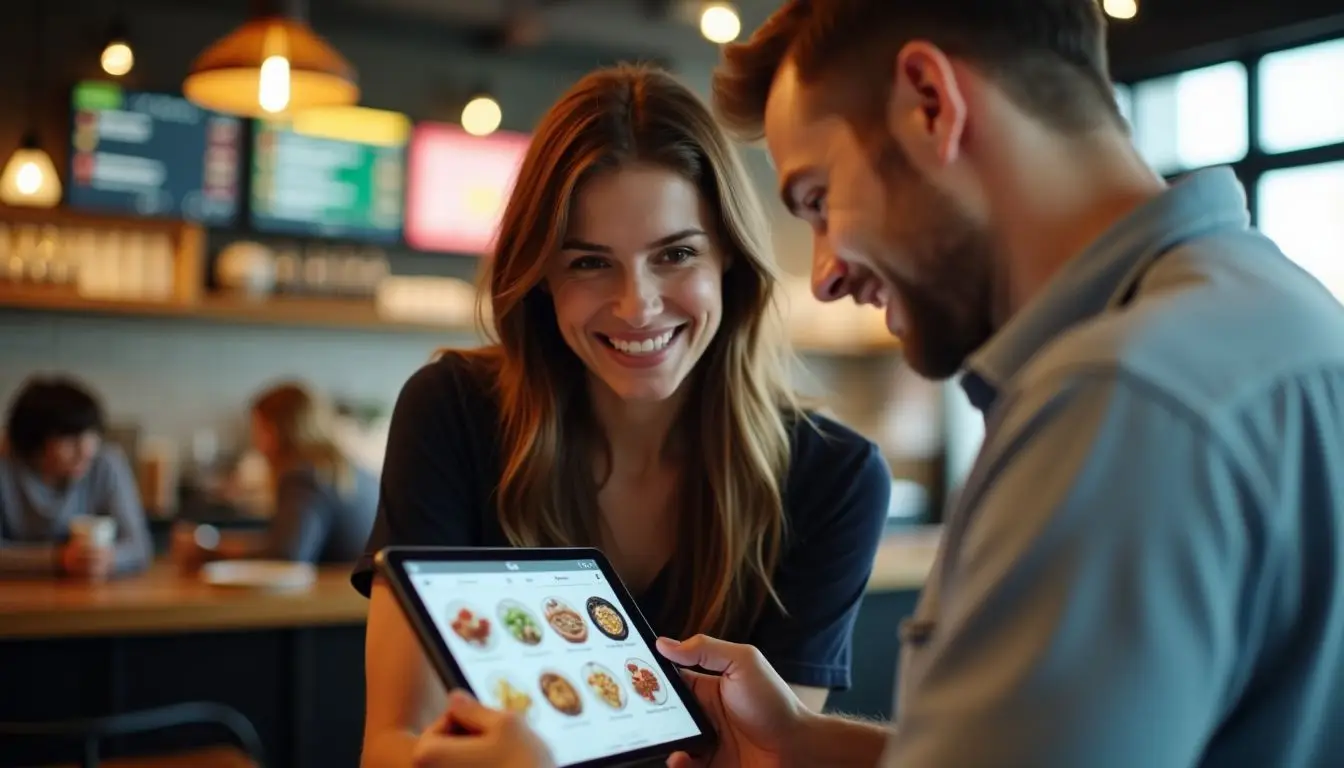
Interactive digital menus are shaping the future of restaurant ordering. They make it easy for guests to choose what they want. Customers enjoy faster service and fun visuals. Restaurants gain better insights into what sells best.
Embracing this change can lead to a more exciting dining experience for everyone.
FAQs
1. What are interactive digital menus in restaurant ordering?
Interactive digital menus in restaurant ordering are high-tech tools that let customers view and pick their food options using a digital platform.
2. How do interactive digital menus change the future of restaurant ordering?
Interactive digital menus can reshape the future of restaurant ordering by providing an easy, fast, and engaging way for customers to choose their meals.
3. Can interactive digital menus offer 3D menu options?
Yes, some advanced interactive digital menus can indeed display 3D menu options. This feature allows customers to see lifelike images of dishes before they order.
4. Are there any drawbacks to using interactive digital menus in restaurants?
While many people find these new tech tools helpful, others might struggle with them at first. But with time and practice, most get used to this modern way of ordering food.



